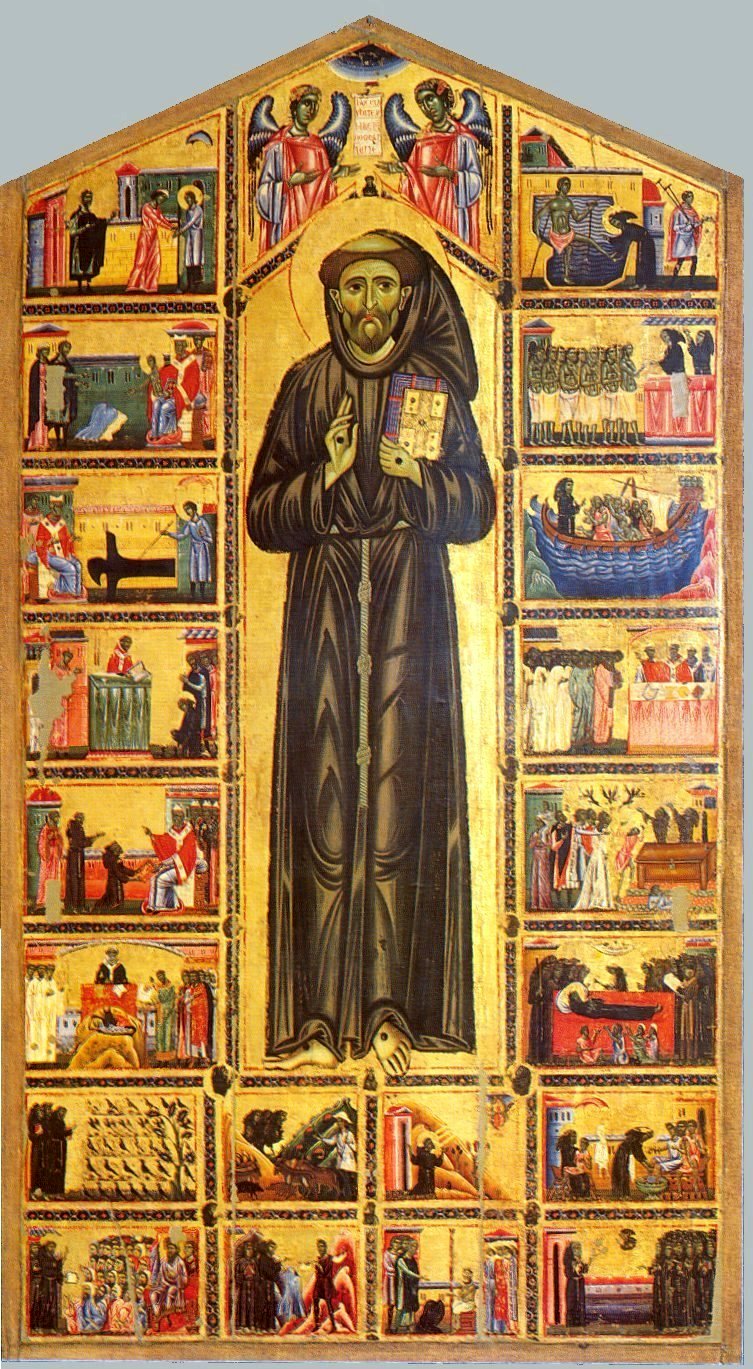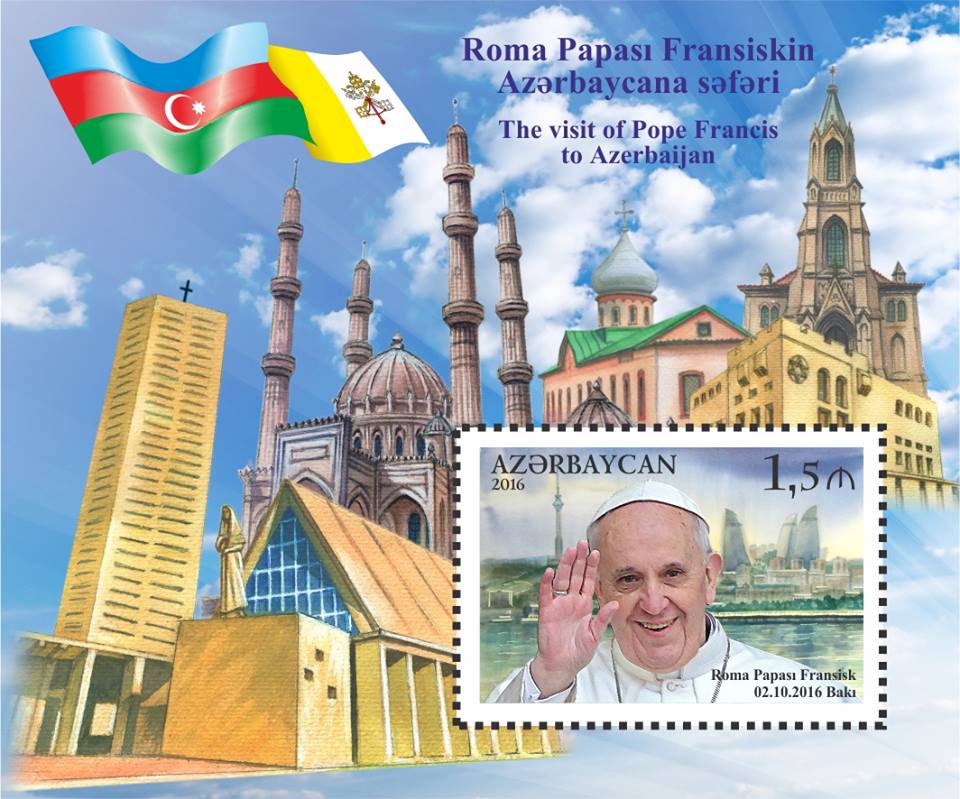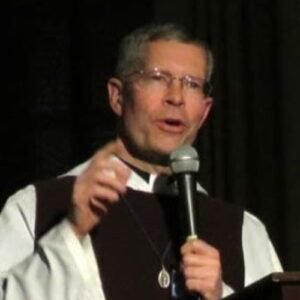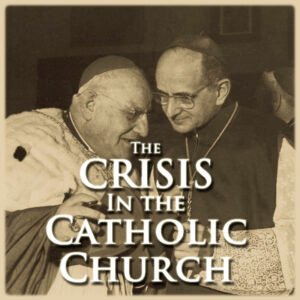by Rev. Fr. Benedict Hughes, CMRI
(Fall, 2015)
After he had been elected by the Novus Ordo cardinals on March 13, 2013, to be the head of the Conciliar Church, Jorge Mario Bergoglio surprised them by announcing that he would be known as Francis. Why a surprise? Because no pope in the history of the Catholic Church had ever taken that name, and Bergoglio claimed to be a pope, the successor of St. Peter.
So why, we might ask, did he choose the name of the great saint of Assisi? Bergoglio spoke of poverty and detachment from the material things of this world. He wanted “a church for the poor.” Since then he has reiterated these themes by visiting poor neighborhoods and speaking out against greed. But he also referred to St. Francis in his recent encyclical on the environment, quoting from the saint’s Canticle of the Creatures. As we shall see, he did a great disservice to the memory of Il Poverello by selectively quoting from this canticle.
This brings up the topic of the misrepresentation of St. Francis, both in the Conciliar Church and in the New Age movement today. Many look upon this saint as having been in tune with nature and thus they claim to adopt his mantle. In short, they believe that he would fully approve the movements today for peace and a greater concern for the environment. As we shall see, nothing could be further from the truth.

What was the real St. Francis like?
In the late 12th century Francis Bernardone was born in Assisi, in central Italy. Although he was baptized Giovanni (John), his father, a well-to-do cloth merchant, named him Francis, meaning “the Frenchman,” for Pietro Bernardone often traveled to France in his quest for materials to sell and was enamored of that country. Thus young Francis grew up in comfortable surroundings, and as a young man dreamed of worldly glory.
St. Francis would be horrified to see how his name has been used in the Conciliar Church to promote a false peace.
His aspirations led Francis to sign up for the army, for Assisi was then engaged in a conflict with neighboring Perugia. But his military pursuits ended in ignominy as he was captured and lay for a year in prison. The deleterious effects to his health required a long period of convalescence, and it was during this time that his mind began to turn to spiritual things. Nevertheless, when the summons came for enlisting in a crusade, Francis once again heeded the call to arms and set out, but not before his father proudly arranged for a new horse, weapons and uniform.
But God had other plans for the young man. While on his way to join the army, Francis experienced a vision which instructed him to return to Assisi. To his father’s embarrassment he returned home and then began to live a penitential, prayerful life, first in a cave, and then later at the church of San Damiano outside Assisi. It was there that Our Lord spoke to him one day, as he knelt in prayer before the crucifix, saying, “Francis, rebuild My Church; it is falling down.” Thinking that Jesus wanted him to rebuild the physical church in which he was kneeling, St. Francis began to beg for supplies to repair the church. Only later did he understand that Our Lord referred to the Church as a whole.
As he continued living a mendicant lifestyle, begging for food and dressing in tattered garments, his father could no longer bear it. Signor Bernardone went to the bishop and asked him to force his son to return anything he had taken from home, for he had decided to disown him. It was then that Francis returned the clothing to his father and exclaimed, “Now I can truly say, ‘Our Father Who art in heaven.’”

Soon disciples gathered about St. Francis, for whom he wrote a rule based on the Gospel. This small band of “friars minor” spent much of their time in prayer, begged their bread, lived in poor huts, and went about preaching amendment of life to the people, first in Italy and then throughout Europe. Pope Innocent III approved the rule and the Order quickly spread throughout Europe, soon numbering many thousands of friars.
Despite the fame which came from the great success of the Order, St. Francis persevered in humility, considering himself the greatest sinner in the world. He steadfastly maintained his love for poverty and simplicity, and this example led many souls to God. It has often been said that no saint ever imitated the life of Christ so closely as did the Poor Man of Assisi. Finally, just two years before his death, Our Lord rewarded the virtue of St. Francis by imprinting the stigmata on his flesh, making him the first person to be honored with the visible marks of the wounds of Christ.
John Paul II’s ecumenical meeting in Assisi was an abomination and a mockery of St. Francis.
One who would like to know the real St. Francis can find no better source than the Fioretti (The Little Flowers of St. Francis). This book deeply impresses upon the reader the holiness of St. Francis and of his early followers. It paints a vivid image of who the Little Poor Man of Assisi really was.
St. Francis Promoted the True Peace that Comes from Jesus Christ and His Church
St. Francis is also known for two prayers which he wrote: the Peace Prayer and the Canticle of the Creatures. In the Peace Prayer of St. Francis we see his understanding of the beatitude “Blessed are the peacemakers, for they shall be called the children of God.” He was known for reconciling enemies and for preaching the importance of forgiveness. The beautiful Peace Prayer is one we all can meditate upon and use as a source of examination of conscience. Am I striving to be an instrument in the hands of Our Lord to bring peace to others? But what is true peace?

True peace begins in the heart of the individual. One who is living a life of sanctifying grace and who perseveres in the love of God and his neighbor, is able to bring peace to others. For discord is a result of the loss of grace. Our Lady of Fatima put it perfectly when she said, “War is a punishment for sin.” Those who would seek peace in the world by promoting or countenancing error will never find true peace. For it is only in Jesus Christ and through His Church that true peace can come to this troubled world. But what kind of peace has been promoted by the modern “popes” of the Novus Ordo Church?
Was the 1997 earthquake that severely damaged Assisi’s Basilica of St. Francis a punishment from God for the Assisi abomination?
St. Francis would be horrified to see how his name has been used in the Conciliar Church to promote a false peace. In 1986 John Paul II called for a meeting of religious leaders from throughout the world, taken from all denominations, to gather at the basilica of St. Francis in Assisi to pray for peace. What a mockery of the humble St. Francis! For he was nothing if not a faithful Catholic, firmly adhering to the teachings of the one true Church founded by Our Lord and Savior. The new ecumenism of Vatican II, in which all the false religions are praised as means of leading souls to God would be an abomination to the devout St. Francis, who was always completely loyal to the faith handed down from the apostles. Was it a coincidence that a great earthquake struck Assisi not long after this assembly, causing irreparable damage to the priceless frescoes in the basilica and claiming the lives of several souls?
But not only did John Paul II gather practitioners of Buddhism, Hinduism, Spiritism, Zoroastrianism, Voodooism, Judaism, Islam, Protestantism, Orthodoxy, and every other form of false religion to pray for peace in Assisi, this pan-religious assembly was repeated by John Paul II in 2002 and again by his successor Benedict XVI in 2011. In other words, the Conciliar Church has completely embraced the idea that all religions are good and praiseworthy, and that man-made religions are the equal of the religion established by God. What an abomination! What a mockery of St. Francis, that this was done in his name and in the church where his bones rest!
Could the Real St. Francis Be the Saint of Ecology?
The promotion of a false notion of peace, in the name of St. Francis, is not the only distortion of his legacy. The modern “popes” have also invoked the name of this saint as a patron of the green movement. In 1979 John Paul II declared St. Francis to be the “patron of ecology.” Then, his successor Francis published an encyclical this past summer named Laudato Si (May 24, 2015), which words are taken from the Canticle of the Creatures (also called the Canticle of the Sun) written by St. Francis. In fact, a large portion of the canticle is quoted in the encyclical.
Interestingly, however, an important section of the canticle was omitted by “Pope” Francis. Not only was a vital section omitted, but I would say that the tone of the canticle was distorted by this omission. There was no use of ellipses to show that a portion had been left out, so the casual reader is led to believe that he is reading the entire prayer. The deletion gives the impression to the reader that St. Francis would approve the modern liberal movement to “save the planet,” which is supposedly undergoing the catastrophic and irreversible effects of global warming.
This is not, however, the time to discuss the reasons why such a notion is promoted today — although it is interesting that one who claims to be pope is more concerned with climate change than he is with saving souls. But what of the omission of a section of the canticle? The section omitted was the following:
“Be praised, my Lord, through those who forgive for love of You; through those who endure sickness and trial.
“Happy those who endure in peace, for by You, Most High, they will be crowned.
“Be praised, my Lord, through our sister Bodily Death, from whose embrace no living person can escape. Woe to those who die in mortal sin!
“Happy those she finds doing Your most holy will. The second death can do no harm to them.”
Is that not interesting! The very part skipped deals with sin, death and judgment — concepts that are not very palatable to one who believes in universal salvation! Woe to those who die in mortal sin! Those words, rather than being omitted, ought to be preached from the housetops! St. Francis’ reference to the “second death” is taken from the Apocalypse of St. John, where the term “second death” refers to eternal damnation. We shall all die the first death, which is bodily death, but woe to those who die the second death!
Again, this vital omission is a cruel disservice to the memory of the great saint of Assisi, who would not recognize today’s green movement as anything that he would promote. St. Francis saw in creatures the Creator who made them. The contemplation of all of God’s works turned his mind to reflect on the omnipotence, the goodness and the beauty of God. In short, the sight of God’s creatures led him to love the good God, who made them and gave them to us for our needs.
The New Religion of Vatican II Attempts to Establish Heaven on Earth
More and more, by their words and actions, do we recognize that the religion of Vatican II is a new religion, which has completely changed the focus from that of striving for holiness by avoiding sin and living a life of grace, to one of living a comfortable, naturalistic, man-centered existence. The true religion teaches that the most important goal is to get to heaven; the new religion teaches that the most important goal is to establish heaven on earth. The Catholic religion teaches that men are created in the image and likeness of God; the new religion teaches that man is God. The Catholic religion teaches that God created animals and all other creatures to be of service to man; the new religion teaches that these creatures are part of God. The true religion teaches that mortal sin is the greatest evil in the world; the new religion teaches that suffering, poverty, unemployment, loneliness, etc. are the greatest evils in the world. Other comparisons could be made — suffice it to say that this new religion of Vatican II has nothing in common with the Catholic religion. In fact, the two are polar opposites.
What do ecumenism and the green movement have in common?
The modern environmental movement is very much a part of this new religion. On August 17, for example, Cardinal Turkson, who is the president of the “Pontifical Council for Justice and Peace” sent a message to the Islamic Climate Change Summit in Istanbul. In that message he called for “believers of different faiths to work together to confront the ecological crisis.” In other words, he is saying that traditional Catholics must get away from their preoccupation with the conviction that the Catholic Church is the one, true Church, because global warming is a crisis that is much more important than any petty squabbles (“Petty,” that is, in their minds.) In his message, Turkson said that of all the “urgent challenges which demand our prayers and action” facing the modern world, the ecological crisis is “the gravest and most intractable.” He went on to say that “Pope” Francis understands this fact, and that is why he wrote his encyclical on the environment, in which he “invites each living person to an ecological conversion of heart” and to do what is necessary to solve these serious problems. He went on to say that “Our urgent action will surely be more effective if we believers of different religious communities find ways to work together.” In other words, the Novus Ordo hierarchy have linked ecumenism with the green movement. (See: http://www.zenit.org/en/articles/cardinal-turkson-calls-on-faiths-to-work-together-to-confront-ecological-crisis)
St. Francis saw in creatures the Creator who made them. The contemplation of all of God’s works turned his mind to reflect on the omnipotence, the goodness and the beauty of God. In short, the sight of God’s creatures led him to love the good God, who made them and gave them to us for our needs.
To understand better this apostasy, reflect upon these words of Bergoglio in his speech to the General Assembly of the United Nations in New York, this past September: “It must be stated that a true ‘right of the environment’ does exist….” (The full text is available on the Vatican website here: http://tinyurl.com/francis-un-climate). This statement is incredible! The Catholic Church has always taught that only beings with an immortal soul can have rights. Thus men and angels have God-given rights. But animals, for example, do not have rights. And the environment certainly cannot have rights! As one commentator pointed out, “Now rocks have rights, but God’s rights are entirely ignored and denied.
Another example of how the new Conciliar Church has adopted the religion of environmentalism was exposed on the web site Novus Ordo Watch in August. The article deals with a televised Novus Ordo Mass, for which the closing hymn was O Beautiful Gaia, an ode to the pagan earth goddess. This took place in the Archdiocese of Toronto, Canada. O Beautiful Gaia was written by Carolyn McDade, an American progressivist and feminist with ties to Unitarian Universalism, who wants to help bring about “humanity renewed in an Earth refreshed.”
It is incredible that the Conciliar Church should so publicly demonstrate that it is adopting paganism in its worship. Perhaps these Modernists are convinced that the sheep have been so dumbed down that they won’t notice — or, worse, won’t even care! Actually, the “faithful” have already become accustomed to such references in the Novus Ordo rite itself, which they have been hearing for 45 years. For please note that in the Offertory of the New Mass they offer to God that “which earth has given and human hands have made” and the “fruit of the vine and work of human hands.” What a far cry from “spotless host” and “chalice of salvation.”
In all this we see how far the Novus Ordo sect has digressed from the teaching and practice of the Catholic Church, which they still claim to represent. But to adopt St. Francis of Assisi, one of God’s dearly loved saints, as somehow supporting this charade, is certainly a blasphemy which God will not allow to go unpunished. For God is jealous of His saints. May our beloved St. Francis intercede for us and assist us to persevere in the true Faith which he so much loved and so perfectly lived.
Peace Prayer of St. Francis
Lord, make me an instrument of Thy peace;
Where there is hatred, let me sow love;
Where there is injury, pardon;
Where there is doubt, faith;
Where there is despair, hope;
Where there is darkness, light;
And where there is sadness, joy.
O Divine Master,
Grant that I may not so much seek
To be consoled, as to console;
To be understood, as to understand;
To be loved as to love.
For it is in giving that we receive;
It is in pardoning that we are pardoned;
And it is in dying that we are born to
eternal life. Amen.
Canticle of the Creatures
Most high, all powerful, all good Lord!
All praise is yours, all glory, all honor,
and all blessing.
To You, alone, Most High, do they belong. No mortal lips are worthy to pronounce
Your name.
Be praised, my Lord, through all Your
creatures,
Especially through my lord Brother Sun,
who brings the day;
And You give light through him.
And he is beautiful and radiant in all his
splendor!
Of You, Most High, he bears the likeness.
Be praised, my Lord, through Sister Moon
and the stars;
In the heavens You have made them,
precious and beautiful.
Be praised, my Lord, through Brothers
Wind and Air, and clouds and storms, And all the weather, through which
You give your creatures sustenance.
Be praised, My Lord, through Sister Water;
She is very useful, and humble, and
precious, and pure.
Be praised, my Lord, through Brother Fire,
Through whom You brighten the night. He is beautiful and cheerful, and powerful
and strong.
Be praised, my Lord, through our sister
Mother Earth, who feeds us and rules us, And produces various fruits with
colored flowers and herbs.
Be praised, my Lord, through those who
forgive for love of You;
Through those who endure sickness and
trial.
Happy those who endure in peace,
For by You, Most High,
they will be crowned.
Be praised, my Lord, through our Sister
Bodily Death,
From whose embrace no living person
can escape.
Woe to those who die in mortal sin!
Happy those she finds doing Your most
holy will.
The second death can do no harm to them.
Praise and bless my Lord, and give thanks,
and serve Him with great humility.
–Taken from the Reign of Mary Quarterly Magazine, Issue 159




